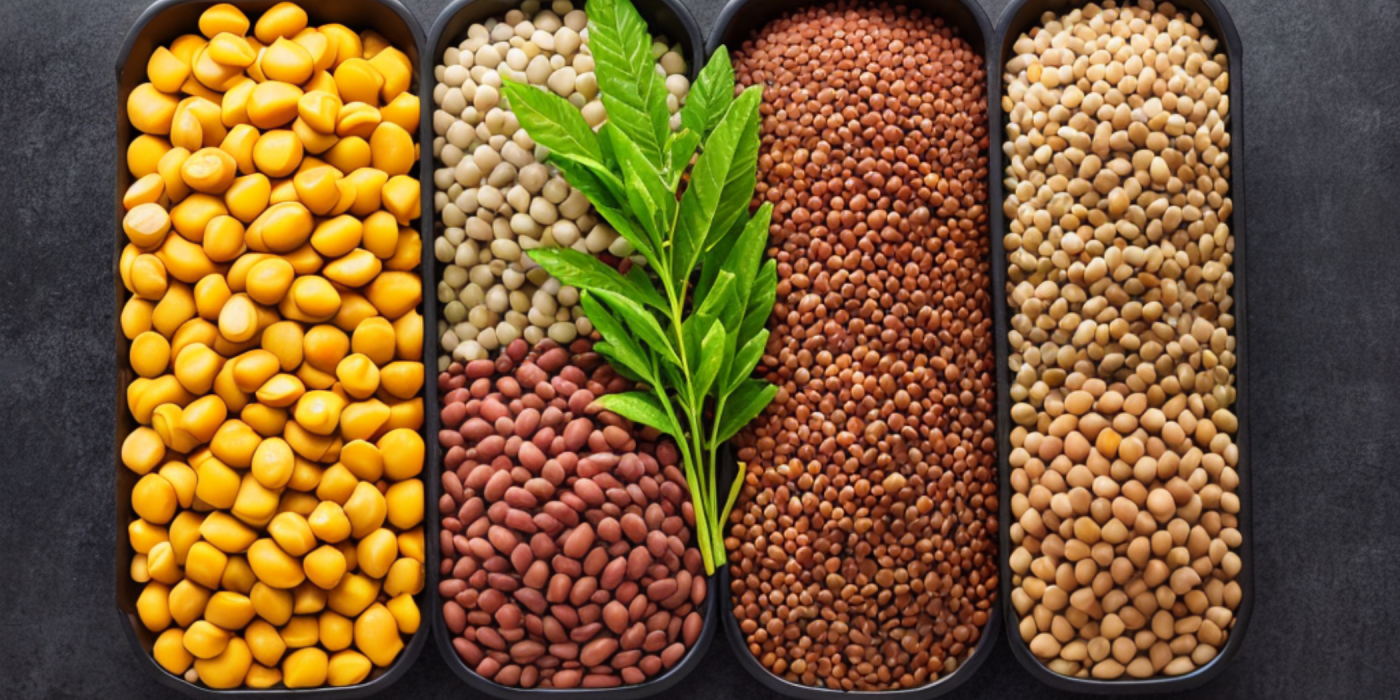Unlocking Heart Health with the TLC Diet: Your Comprehensive Guide

In a world where diets come and go like fleeting trends, the TLC diet has steadily held its ground. But why is it so enduring, and why does it garner widespread endorsement from health professionals? This article delves into these questions and more, shedding light on the many facets of the TLC diet.
Introduction to the TLC Diet
The Genesis and Focus of the TLC Diet
The Therapeutic Lifestyle Changes, or TLC diet, is not a newcomer in the realm of healthy eating. Developed by the American Heart Association, this diet has gained recognition for its scientific grounding and its potent ability to promote heart health. Unlike many trendy diets, the TLC diet doesn't promise rapid weight loss or overnight transformation. Instead, its primary focus is on long-term heart health, achieved through a commitment to a balanced diet and active lifestyle.
Purpose of the Article
In this comprehensive guide, we aim to provide an in-depth look into the TLC diet. From understanding its origins and guiding principles to exploring the wide array of foods that it promotes, this article is your one-stop resource. We will also dive into the numerous health benefits of this diet, offer practical tips for incorporating it into your daily routine, and contrast it with other popular diets. Whether you're seeking to improve your heart health or simply wish to live a healthier life, the TLC diet might just be the approach you need.
The Science and Origins of the TLC Diet
The TLC diet, an acronym for Therapeutic Lifestyle Changes, is not your everyday fad diet. This scientifically-backed approach to healthy eating has a specific goal: improving heart health and managing cholesterol.
TLC Diet's Origins and Endorsement
Originating from a collaboration of health and medical professionals, the TLC diet has been extensively reviewed and is endorsed by prominent organisations such as the American Heart Association. These health professionals have constructed this dietary approach with a keen focus on fostering heart health, making it an attractive option for those with or at risk of heart disease.
This endorsement from a reputable health organisation gives the TLC diet an edge in the sea of diet plans, lending it an air of credibility and trust. The diet’s main goal is to reduce the risk of heart disease and lower high levels of LDL cholesterol (the 'bad' cholesterol) in the blood. It's more than just a diet; it's a comprehensive lifestyle change backed by rigorous scientific research.
The Science Behind the TLC Diet
Numerous scientific studies have been conducted to assess the efficacy of the TLC diet, with many demonstrating its effectiveness for cholesterol management. According to these studies, following the TLC diet can result in significant reductions in LDL cholesterol levels, thereby lowering the risk of heart disease. This diet recommends a reduction in saturated fat and cholesterol intake while encouraging an increase in fibre, and these recommendations are well-supported by scientific literature.
In conclusion, the TLC diet, backed by a substantial body of scientific evidence and the endorsement of reputable health organisations, is an excellent choice for those aiming to manage their cholesterol levels and improve their heart health.
Core Principles of the TLC Diet
The Therapeutic Lifestyle Changes (TLC) Diet is centred around three key dietary principles designed to promote heart health and manage cholesterol levels.
Low Saturated Fat Intake
The TLC diet prioritises foods low in saturated fats, which can contribute to the buildup of cholesterol in your arteries and potentially lead to heart disease. It is recommended to limit your saturated fat intake to less than 7% of your daily calories. Therefore, you would aim to consume less of foods like fatty cuts of meat and full-fat dairy products and incorporate more lean proteins and low-fat or non-fat dairy into your diet.
Low Cholesterol Consumption
Closely tied to the previous point, the TLC diet also advocates for a low cholesterol intake. It is advised to limit your daily cholesterol intake to less than 200 milligrams. This often means reducing the consumption of certain animal-based products known to be high in cholesterol.
High Fibre Intake
Fibre is a crucial element of the TLC diet. It helps manage cholesterol levels by absorbing cholesterol in your digestive system and flushing it out of your body. The TLC diet emphasises foods rich in soluble fibre, such as fruits, vegetables, legumes, and whole grains.
Nutrient Intake Proportions
In terms of overall nutrient proportions, the TLC diet suggests that 50-60% of your daily calories should come from carbohydrates, particularly complex ones, while protein should comprise about 15% of your daily calories. The rest should come from fats, with a keen focus on limiting saturated fats.
These guidelines not only target cholesterol management but also contribute to an overall balanced and healthy diet, thus promoting comprehensive wellness. Remember, it's always best to consult with a healthcare professional before making significant dietary changes.
What to Eat on the TLC Diet
The TLC Diet provides a holistic approach to a healthier heart and overall well-being. It puts forth a specific list of foods to embrace and those to limit or avoid.
Foods to Include in the TLC Diet
The TLC diet promotes a balanced and nourishing array of foods that are low in cholesterol and saturated fat, yet high in fibre.
Fruits and Vegetables
These form the cornerstone of the TLC diet, providing a wealth of vitamins, minerals, and fibre. The emphasis is on fresh, whole fruits and vegetables, from antioxidant-rich berries to nutrient-dense leafy greens.
Whole Grains
Whole grains, such as brown rice, oats, and whole grain bread or pasta, are encouraged. They provide energy, along with vital fibre that aids digestion and keeps you feeling satiated.
Lean Proteins
Protein sources should primarily come from lean options such as poultry, fish, and legumes. These offer high-quality protein without the unhealthy fats found in higher-fat meats.
Low-fat or Non-fat Dairy
Dairy can still be included, but opt for low-fat or non-fat versions to limit your intake of saturated fats.
Foods to Limit or Avoid
The TLC diet advises caution with certain foods to ensure heart health.
Red Meat and Full-fat Dairy
These often contain high levels of saturated fat and cholesterol, so they should be limited or replaced with leaner options.
Fried Foods and High Saturated Fat Foods
Foods that are fried or high in saturated fats, such as pastries, chips, and certain fast foods, should be kept to a minimum due to their potential to increase cholesterol levels.
Understanding what to eat and what to limit is key to reap the heart-healthy benefits of the TLC diet. By embracing this diet's principles, you can take an important step towards better health.
Practical Implementation of the TLC Diet
Embracing the TLC diet doesn't necessitate a drastic overhaul of your current eating habits. In fact, it's often the small, manageable changes that prove most effective in the long term. Let's delve into some practical tips and strategies to incorporate the TLC diet into your everyday routine, followed by a few sample meal ideas to get you started.
Suggested Tips and Strategies
Firstly, it's important to understand your current diet. Begin by taking note of your daily intake, particularly of saturated fats and cholesterol. From here, identify potential areas for change. This could be as simple as swapping out butter for olive oil, or choosing lean cuts of meat over fattier versions.
Gradual changes often yield sustainable results. Rather than trying to transform your diet overnight, aim to make one or two adjustments per week. This could involve adding more fruits and vegetables to your meals, choosing whole grains over refined options, or limiting your intake of fried foods.
Finally, remember to focus on balance. While the TLC diet emphasises certain food groups, it doesn't exclude others. Moderation is key.
Sample Meal Plans and Recipes
To give you an idea of what a day on the TLC diet might look like, consider the following sample meal plan:
Breakfast: A bowl of oatmeal topped with fresh berries and a sprinkle of nuts. Lunch: Grilled chicken salad with plenty of leafy greens, tomatoes, cucumber, and a vinaigrette dressing. Dinner: Baked salmon served with a side of steamed vegetables and quinoa. Snacks: Fresh fruit, vegetable sticks, or a small handful of unsalted nuts.
Implementing the TLC diet can be a rewarding journey towards improved heart health. Remember, it's not about perfection but about making better choices one step at a time.
Health Benefits of the TLC Diet
As we delve deeper into the Therapeutic Lifestyle Changes (TLC) diet, it's crucial to understand the potential benefits this heart-healthy plan may bring. The main advantages centre around heart health and cholesterol management, but it doesn't stop there. The TLC diet can also have an impact on weight management and overall well-being.
Heart Health and Cholesterol Management
The TLC diet, by design, focuses on promoting heart health. It places a strong emphasis on reducing the intake of saturated fats and cholesterol—two factors linked to increased risk of heart disease. As the diet encourages the consumption of foods high in fibre and lean proteins, it can help to lower low-density lipoprotein (LDL), often referred to as 'bad' cholesterol, in the bloodstream.
Moreover, the diet is high in fruits, vegetables, and whole grains, all of which have been associated with heart health due to their high fibre content and a plethora of heart-friendly nutrients. This approach could lead to a significant decrease in the risk of developing heart disease, thereby promoting longevity and healthier life years.
Weight Management and Overall Health
While the TLC diet's primary focus is heart health, it also encourages healthy eating habits that can lead to weight loss or management. By focusing on high-fibre, low-fat foods, the TLC diet naturally limits calorie intake while ensuring satiety, a crucial factor for successful weight management.
Beyond these core benefits, the diet promotes overall health due to its emphasis on nutrient-dense, whole foods. Consuming a diverse range of foods as advocated by the TLC diet, can provide a wealth of essential vitamins and minerals, thereby supporting a range of body functions and promoting overall well-being.
In a nutshell, adopting the TLC diet can potentially improve heart health, support weight management, and enhance overall wellness, offering an excellent framework for a sustainable, healthy lifestyle.
Comparing the TLC Diet with Other Diets
When contemplating changes to your dietary habits, it's important to consider all options and how they align with your personal health goals. Here, we compare the TLC diet to other popular diets such as the Mediterranean, DASH, and Keto diets.
TLC vs. Mediterranean Diet
The Mediterranean diet focuses on whole grains, fruits, vegetables, lean proteins, and healthy fats, much like the TLC diet. However, it places less emphasis on cholesterol and saturated fat intake. Both diets are heart-friendly, but the TLC diet's strict guidelines on saturated fats and cholesterol may make it more suitable for those with specific cholesterol management goals.
TLC vs. DASH Diet
The DASH (Dietary Approaches to Stop Hypertension) diet, like the TLC, is designed to improve heart health. It concentrates on reducing sodium intake to manage blood pressure. Both diets promote a high intake of fruits, vegetables, and whole grains, but the DASH diet might be more appropriate for individuals specifically looking to control their blood pressure.
TLC vs. Keto Diet
The Keto diet, focusing on high-fat, moderate protein, and very low carbohydrate intake, is quite distinct from the TLC diet. While Keto can lead to weight loss, it does not focus on heart health to the same extent as the TLC diet. If cholesterol management and heart health are your priorities, the TLC diet may be a more appropriate choice.
In conclusion, while all these diets have their own benefits, the TLC diet stands out for its rigorous attention to heart health and cholesterol management. As always, it's advisable to consult with a healthcare professional before deciding which diet is best suited to your specific health needs.
Potential Drawbacks and Precautions with the TLC Diet
While the TLC diet offers an array of benefits, especially for heart health and cholesterol management, it's also crucial to address potential challenges and considerations. Every individual is unique, and one's dietary choices should always reflect personal health circumstances and goals.
Possible Challenges with the TLC Diet
The TLC diet requires diligence in monitoring one's intake of saturated fats, cholesterol, and fibre. This may prove challenging for those unaccustomed to tracking their food in such detail. The diet also emphasises the reduction of certain food types, such as red meat and full-fat dairy, which could make it difficult for individuals with specific dietary preferences or cultural eating habits.
Moreover, while the TLC diet promotes heart health, it might not provide the quick weight loss results that some other diets promise. Therefore, individuals primarily interested in swift weight loss might find the diet less appealing.
Precautions and Professional Consultation
Before embarking on the TLC diet, it's prudent to consult with a healthcare professional. This is especially pertinent for individuals with pre-existing conditions, such as heart disease or high cholesterol. A nutritionist or dietitian can provide personalised advice, ensuring that the diet is tailored to meet one's specific nutritional needs.
Additionally, those on certain medications, particularly for cholesterol management, should seek medical advice as dietary changes could affect medication effectiveness.
Remember, making informed decisions about your diet is a key part of maintaining and improving health. Involving healthcare professionals ensures that your approach is safe, personalised, and effective.
Summarising the TLC Diet
Throughout our guide, we've uncovered the essence of the TLC diet - a nutritional approach designed to promote heart health through a low-saturated fat, low-cholesterol, and high-fibre regimen. By encouraging a dietary intake rich in fruits, vegetables, whole grains, lean proteins, and low-fat or non-fat dairy, the TLC diet provides a comprehensive framework for managing cholesterol levels.
Simultaneously, it recommends limiting the consumption of red meat, full-fat dairy, and fried foods, thus helping to avoid foods known to elevate cholesterol levels. This scientifically-backed diet, endorsed by the American Heart Association, offers not only a means to manage cholesterol but also a pathway to maintaining overall health and potential weight management.
The TLC Diet and You
While the TLC diet provides numerous benefits, it's crucial to consider whether it aligns with your personal health goals and lifestyle. If heart health is a priority for you, or you're seeking a diet that promotes comprehensive wellness, the TLC diet could be an excellent option.
Remember, making dietary changes is a personal journey, one that should reflect your unique needs and preferences. With the TLC diet, you may find a pathway to better heart health and overall well-being. But ultimately, the choice is yours to make.
Related to this article are the following:
- Boost Your Brain Health with the MIND Diet: A Comprehensive Guide
- The Mediterranean Diet: A Delicious Way to Eat Your Way to Better Health
- Seaweed Snacks Unwrapped: Recipes, Health Benefits, and Perfect Pairings
- Healthy eating: making cheap and easy meals to encourage healthy eating
- Healthy Eating: The Benefits of Eating a Healthy Diet
I do hope you have enjoyed this article and hope that you will subscribe to my newsletter so you can get the latest information about all things naturally relaxing.
Stay in touch, join the Naturally Relaxing Newsletter
Newsletter Signup
Post Your Comments
or post as a guest
Be the first to comment.
Latest articles in Food

Hot Cross Buns This Easter: A Timeless Tradition of Baking and Sharing

Chocolate Krispie Cakes for Easter: A Simple, Festive Treat for All

2023 Christmas Culinary Delights: Recipes for the Ultimate Festive Feast

Embrace Autumn with the Best Pumpkin Spice Recipes in the UK

Turning Pumpkin Carvings into Pumpkin Pie: A British Culinary Tradition






